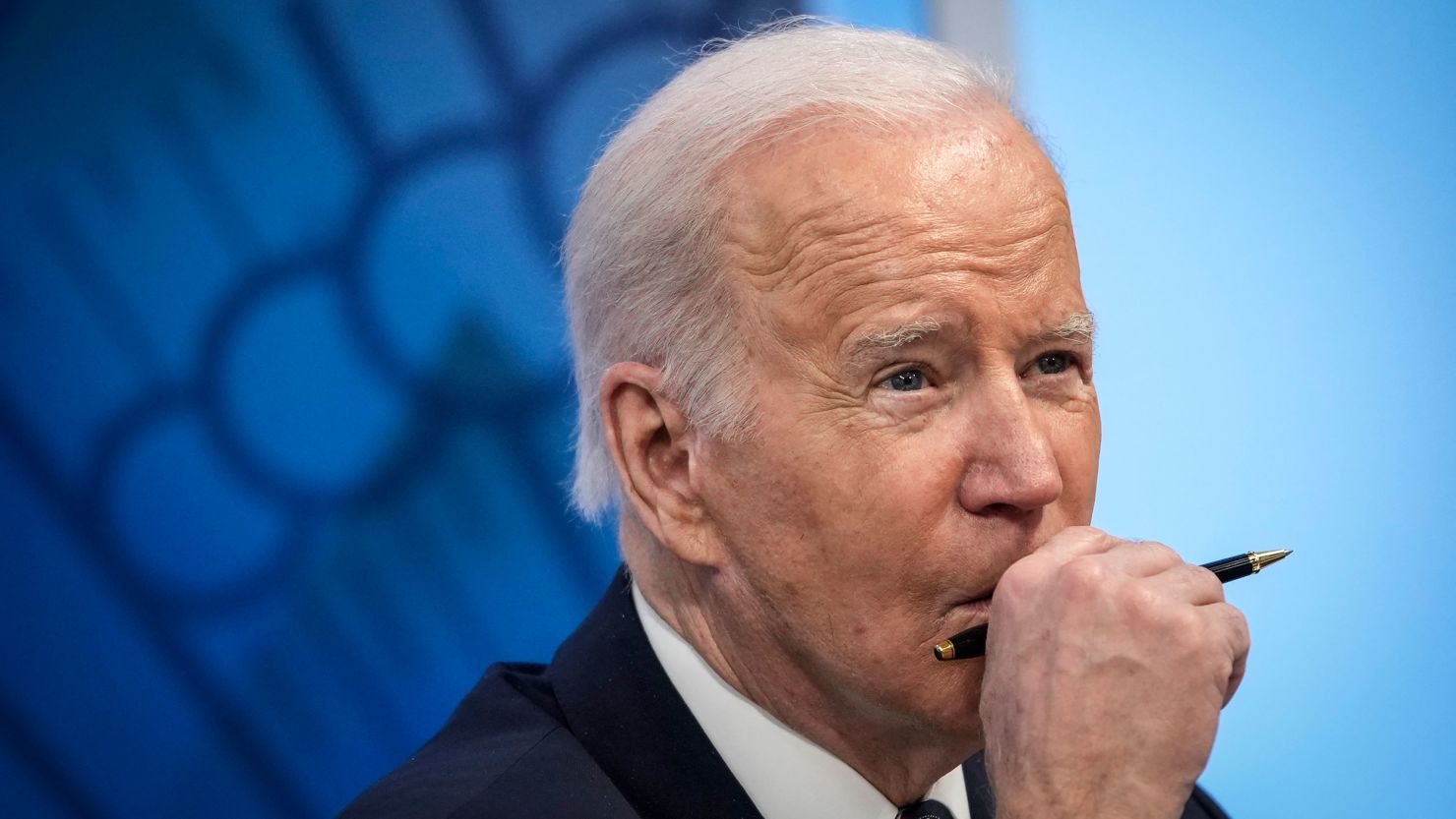At the beginning of March, there were signs that President Joe Biden was on the come up.
On March 5, I wrote a piece headlined “Is this the beginning of a Joe Biden comeback?” that noted that strong reviews for his State of the Union speech, a huge jobs number in February and the retreat of Covid-19 nationally all seemed to create and opportunity for Biden to dig himself out of the political hole he was in.
As evidence, I cited an NPR/PBS Newshour/Marist poll, which came out on March 4, that showed 47% approving of the job Biden was doing as compared to 50% disapproving – one of a handful of polls that came out around that time that showed a positive bump for the President.
Marist released another poll on Thursday – on the last day of March. That poll showed Biden with a dismal 39% approval rating, with 55% of registered voters disapproving. That’s broadly consistent with where Biden ends the month in CNN’s poll of polls: 39% approve of the job Biden is doing while 54% disapprove.
So, what happened? Why did a month that opened with the promise of a political comeback – just in time for the coming midterm election – end with Biden stuck at or below his previous polling lows? And how can Biden still be struggling when much of the news on the economy – including the March jobs report that showed unemployment at its lowest point in more than two years – is quite positive.
The answer, in a word, is inflation. Or in four words: Inflation and gas prices.
A key measure of inflation, the Personal Consumption Expenditures price index, rose 6.4% in February as compared to the same period in 2021. That’s the fastest increase for the index since January 1982. That’s in keeping with the Consumer Price Index, which was also at its highest level since January 1982 in the 12-month period that ended in February.
The average gas price nationally is $4.22, according to AAA. That’s down marginally from last week but an increase of more than a dollar from the average price at the start of 2022, according to Gas Buddy.
Poll after poll of late has made clear that the public is primarily focused on the economy and inflation over all other issues – including Russia’s invasion of Ukraine – and that they do not think Biden is doing a very good job on that front. Just 1 in 3 Americans (34%) approved of how Biden was handling the economy in a new Quinnipiac University poll, with 58% disapproving.
Those numbers come in spite of generally positive economic news including the March jobs report released Friday morning that showed the economy had gained more than 400,000 jobs last month and is only 1.6 million jobs short of where the country was prior to the Covid-19 pandemic.
Biden and his team are well aware of the problem – and are trying to address it. Hence the President’s announcement on Thursday that he was authorizing the release of 180 million barrels of oil from the country’s Strategic Petroleum Reserve, and seeking to blame the rise in gas prices on the Russian invasion.
“Our prices are rising because of (Russian President Vladimir) Putin’s actions,” Biden said. “There isn’t enough supply. And the bottom line is if we want lower gas prices we need to have more oil supply right now.”
In a tweet Thursday night, Biden said: “I know gas prices are painful. My plan will help ease that pain today and safeguard against it tomorrow.”
But, even as Biden made the announcement, officials acknowledged that it was no silver bullet to lowering gas prices. As CNN wrote: “Still, officials declined to say how quickly, or by how much, gas prices might come down as a result of the release. And they said they to address not focused on “immediate short-term price movements” in the oil market.”
What Biden and his team are grappling with is the disconnect between undoubtedly positive jobs number – the 3.6% jobless rate in March was the lowest since February 2020 – and the way that people perceive the strength (or lack thereof) of the economy based on more day-to-day concerns like the price of gas or groceries.
Biden always runs the risk of looking out of touch if he openly touts the economic success amid this inflationary period. And no president – or politician – wants to look clueless about the number one issue on voters’ minds.
What is beyond debate is that Biden starts April in a less advantageous political place than he began March. And that has to worry Democrats on the ballot this fall.



